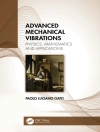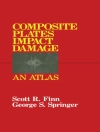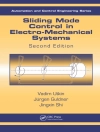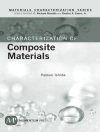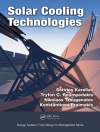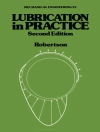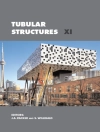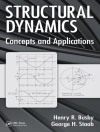Although the overall appearance of modern airliners has not changed a lot since the introduction of jetliners in the 1950s, their safety, efficiency and environmental friendliness have improved considerably. Main contributors to this have been gas turbine engine technology, advanced materials, computational aerodynamics, advanced structural analysis and on-board systems. Since aircraft design became a highly multidisciplinary activity, the development of multidisciplinary optimization (MDO) has become a popular new discipline. Despite this, the application of MDO during the conceptual design phase is not yet widespread.
Advanced Aircraft Design: Conceptual Design, Analysis and Optimization of Subsonic Civil Airplanes presents a quasi-analytical optimization approach based on a concise set of sizing equations. Objectives are aerodynamic efficiency, mission fuel, empty weight and maximum takeoff weight. Independent design variables studied include design cruise altitude, wing area and span and thrust or power loading. Principal features of integrated concepts such as the blended wing and body and highly non-planar wings are also covered.
The quasi-analytical approach enables designers to compare the results of high-fidelity MDO optimization with lower-fidelity methods which need far less computational effort. Another advantage to this approach is that it can provide answers to “what if” questions rapidly and with little computational cost.
Key features:
- Presents a new fundamental vision on conceptual airplane design optimization
- Provides an overview of advanced technologies for propulsion and reducing aerodynamic drag
- Offers insight into the derivation of design sensitivity information
- Emphasizes design based on first principles
- Considers pros and cons of innovative configurations
- Reconsiders optimum cruise performance at transonic Mach numbers
Advanced Aircraft Design: Conceptual Design, Analysis and Optimization of Subsonic Civil Airplanes advances understanding of the initial optimization of civil airplanes and is a must-have reference for aerospace engineering students, applied researchers, aircraft design engineers and analysts.
विषयसूची
Foreword xv
Series Preface xix
Preface xxi
Acknowledgements xxv
1 Design of the Well-Tempered Aircraft 1
1.1 How Aircraft Design Developed 1
1.2 Concept Finding 6
1.3 Product Development 8
1.4 Baseline Design in a Nutshell 13
1.5 Automated Design Synthesis 19
1.6 Technology Assessment 22
1.7 Structure of the Optimization Problem 25
Bibliography 27
2 Early Conceptual Design 31
2.1 Scenario and Requirements 31
2.2 Weight Terminology and Prediction 36
2.3 The Unity Equation 41
2.4 Range Parameter 46
2.5 Environmental Issues 51
Bibliography 56
3 Propulsion and Engine Technology 59
3.1 Propulsion Leading the Way 59
3.2 Basic Concepts of Jet Propulsion 60
3.3 Turboprop Engines 67
3.4 Turbofan Engine Layout 70
3.5 Power Plant Selection 74
Bibliography 78
4 Aerodynamic Drag and Its Reduction 81
4.1 Basic Concepts 81
4.2 Decomposition Schemes and Terminology 84
4.3 Subsonic Parasite and Induced Drag 87
4.4 Drag Polar Representations 95
4.5 Drag Prediction 99
4.6 Viscous Drag Reduction 106
4.7 Induced Drag Reduction 114
Bibliography 115
5 From Tube and Wing to Flying Wing 121
5.1 The Case for Flying Wings 121
5.2 Allocation of Useful Volume 127
5.3 Survey of Aerodynamic Efficiency 134
5.4 Survey of the Parameter ML/D 138
5.5 Integrated Configurations Compared 140
5.6 Flying Wing Design 149
Bibliography 152
6 Clean Sheet Design 157
6.1 Dominant and Radical Configurations 157
6.2 Morphology of Shapes 159
6.3 Wing and Tail Configurations 165
6.4 Aircraft Featuring a Foreplane 169
6.5 Non-Planar Lifting Systems 173
6.6 Joined Wing Aircraft 177
6.7 Twin-Fuselage Aircraft 182
6.8 Hydrogen-Fuelled Commercial Transports 186
6.9 Promising Concepts 189
Bibliography 190
7 Aircraft Design Optimization 197
7.1 The Perfect Design: An Illusion? 197
7.2 Elements of Optimization 198
7.3 Analytical or Numerical Optimization? 206
7.4 Large Optimization Problems 213
7.5 Practical Optimization in Conceptual Design 219
Bibliography 223
8 Theory of Optimum Weight 229
8.1 Weight Engineering: Core of Aircraft Design 229
8.2 Design Sensitivity 232
8.3 Jet Transport Empty Weight 234
8.4 Design Sensitivity of Airframe Drag 239
8.5 Thrust, Power Plant and Fuel Weight 243
8.6 Take-Off Weight, Thrust and Fuel Efficiency 249
8.7 Summary and Reflection 254
Bibliography 257
9 Matching Engines and Airframe 261
9.1 Requirements and Constraints 261
9.2 Cruise-Sized Engines 262
9.3 Low Speed Requirements 265
9.4 Schematic Take-Off Analysis 267
9.5 Approach and Landing 273
9.6 Engine Selection and Installation 275
Bibliography 278
10 Elements of Aerodynamic Wing Design 281
10.1 Introduction 281
10.2 Planform Geometry 283
10.3 Design Sensitivity Information 286
10.4 Subsonic Aircraft Wing 291
10.5 Constrained Optima 295
10.6 Transonic Aircraft Wing 298
10.7 Lift Coefficient and Aspect Ratio 304
10.8 Detailed Design 309
10.9 High Lift Devices 313
Bibliography 315
11 The Wing Structure and Its Weight 319
11.1 Introduction 319
11.2 Methodology 321
11.3 Basic Wing Box 326
11.4 Inertia Relief and Design Loads 335
11.5 Non-Ideal Weight 338
11.6 Secondary Structures and Miscellaneous Items 344
11.7 Stress Levels in Aluminium Alloys 349
11.8 Refinements 352
11.9 Application 357
Bibliography 361
12 Unified Cruise Performance 363
12.1 Introduction 363
12.2 Maximum Aerodynamic Efficiency 366
12.3 The Parameter ML/D 371
12.4 The Range Parameter 374
12.5 Range in Cruising Flight 379
12.6 Cruise Procedures and Mission Fuel 382
12.7 Reflection 388
Bibliography 390
A Volumes, Surface and Wetted Areas 393
A.1 Wing 393
A.2 Fuselage 394
A.3 Tail Surfaces 395
A.4 Engine Nacelles and Pylons 395
A.5 Airframe Wetted Area 395
Bibliography 396
B International Standard Atmosphere 397
C Abbreviations 399
Index 403
लेखक के बारे में
Egbert Torenbeek, Delft University of Technology, The Netherlands Egbert Torenbeek is Professor Emeritus of Aircraft Design at Delft University of Technology.He graduated as an engineer in 1961 at TU Delft and in 1964 he became responsible for teaching the Aircraft Preliminary Design course at the department of Aerospace Engineering. After a sabbatical at Lockheed Georgia Company, he became a senior lecturer and full professor of the Aircraft Design chair at TU Delft, initiating research and teaching in computer-assisted aircraft design.


